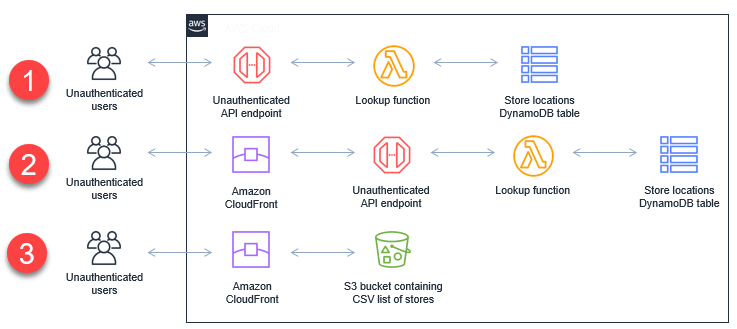AWS Compute Blog
Category: Management Tools
Operating Lambda: Debugging configurations – Part 3
This post explains common integration errors in Lambda-based applications. These include running an unintended version or alias of a function, triggering infinite loops unintentionally, and issues with downstream availability. In each case, I explain steps you can take to remediate the issue.
Operating Lambda: Debugging configurations – Part 2
This is the second post in a series on debugging Lambda-based applications. This post shows how to identify and resolve memory and CPU-bound functions, and how to understand and use timeouts effectively in production applications.
Operating Lambda: Building a solid security foundation – Part 2
In this blog post, I explain how to secure workloads with public endpoints and the different authentication and authorization options available. I also show different approaches to exposing APIs publicly.
Managing domain membership of dynamic fleet of EC2 instances
This post is written by Alex Zarenin, Senior AWS Solution Architect, Microsoft Tech. Updated: February 10, 2021 1. Introduction For most companies, a move of Microsoft workloads to AWS starts with “lift and shift” where existing workloads are moved from the on-premises data centers to the cloud. These workloads may include WEB and API farms, […]
How to monitor Windows and Linux servers and get internal performance metrics
This post was written by Dean Suzuki, Solution Architect Manager. Customers who run Windows or Linux instances on AWS frequently ask, “How do I know if my disks are almost full?” or “How do I know if my application is using all the available memory and is paging to disk?” This blog helps answer these […]
Optimizing AWS Lambda cost and performance using AWS Compute Optimizer
This post is authored by Brooke Chen, Senior Product Manager for AWS Compute Optimizer, Letian Feng, Principal Product Manager for AWS Compute Optimizer, and Chad Schmutzer, Principal Developer Advocate for Amazon EC2 Optimizing compute resources is a critical component of any application architecture. Over-provisioning compute can lead to unnecessary infrastructure costs, while under-provisioning compute can […]
Introducing Spot Blueprints, a template generator for frameworks like Kubernetes and Apache Spark
This post is authored by Deepthi Chelupati, Senior Product Manager for Amazon EC2 Spot Instances, and Chad Schmutzer, Principal Developer Advocate for Amazon EC2 Customers have been using EC2 Spot Instances to save money and scale workloads to new levels for over a decade. Launched in late 2009, Spot Instances are spare Amazon EC2 compute […]
ICYMI: Serverless pre:Invent 2020
During the last few weeks, the AWS serverless team has been releasing a wave of new features in the build-up to AWS re:Invent 2020. This post recaps some of the most important releases for serverless developers. re:Invent is virtual and free to all attendees in 2020 – register here. See the complete list of serverless […]
Tracking the latest server images in Amazon EC2 Image Builder pipelines
This post courtesy of Anoop Rachamadugu, Cloud Architect at AWS The Amazon EC2 Image Builder service helps users to build and maintain server images. The images created by EC2 Image Builder can be used with Amazon Elastic Compute Cloud (EC2) and on-premises. Image Builder reduces the effort of keeping images up-to-date and secure by providing […]
Using AWS Lambda extensions to send logs to custom destinations
You can now send logs from AWS Lambda functions directly to a destination of your choice using AWS Lambda Extensions. Lambda Extensions are a new way for monitoring, observability, security, and governance tools to easily integrate with AWS Lambda. For more information, see “Introducing AWS Lambda Extensions”. To help you troubleshoot failures in Lambda functions, […]







